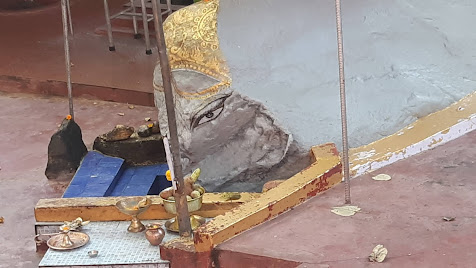Three friends from Shanghai were on holiday in Bhutan last week. A man and two ladies were walking their way to Paro Taktshang when we met last Sunday. There were people from across the world that day, but these three came into focus because of what happened to them then. My family and these three friends made it to the place, where the uphill climb ends, almost at the same time, of course we rode horses. We took a long rest there, the spot where Je Gaden Rinchen was born.
The three Chinese seemed to be in hurry, with their guide panting after them. Just then the man slipped and fell, almost falling down the hill. He lay flat on the muletrack crying in pain- his left ankle was twisted. His two lady friends were shocked and screaming. Their guide was loaded with their cameras to do anything. Another ten minutes walk would have taken them to Paro Taktshang.
They immediately attracted lots of attention but they needed help more than mere attention. That's when I ran to them with my sister in-law, who was once a doctor in China and therefore carries whole set of first aid in her handbag. She assessed the injury and massaged it with balm. The huge man was still crying in pain but my sister in-law had pain killer with her. She even gave him a few more tablets for the evening. The man was shivering and his faced looked scary. We wrapped him in our kabney and I used my teacherly skill to calm him, " It's a very lucky sign that you fell right here where a great saint was born- Je Gaden Rinchen. We consider it very lucky." The magic worked on the two ladies. They were nodding and even smiling. My brothers carried the man to a comfortable spot and ask him to rest while we sort out what to do next. It was confirmed that the man cannot walk anymore, and his journey from Shanghai to Paro Taktshang ends here.
I asked the guide to call his office for backup, but I was only talking to the office himself. Like many tour operators his was one man army- he is the guide, the agent, the office and the final backup. He was funnily blaming the man for not walking carefully, instead of worrying. I didn't want our guest to feel helpless, so I told him to wait for my family to return so that we could carry him down.
The two ladies were biting their nails, seemingly not wanting to go back without completing their journey but their guide was even more perplexed. Then I decided to guide the two ladies with my family so that the guide could stay back with the injured. They happily agreed, even the injured.
It was my fourth visit to Taktshang and I can comfortably be a good guide but I had with me seven members of my family who were there for the first time. It took me over an hour to explain everything to the nine of them with special attention to my sister in-law and the two ladies, knowing that they can never make it back for second time. Because I agreed to be their guide I couldn't help see them struggle with their heavy cameras- so I carried them as well. As if nine of them weren't enough a group from Bangkok asked me to explain to them a lot of things.
I then met two senior guides to who I explained about the injured man and the indecisive guide, and requested them for help. By the time we walked out of the monastery I got a call from the guide saying he got assistance from the senior guides and that they were carrying him down. I told him not to worry about his guests who were with me.
In one of the
Goenkhangs I was explaining about the prophecies of Guru Rinpochee, and knowing my two guests were Chinese I asked if they were a big fan of Chairman Mao Zedong. They excitedly replied yes. I sorrily told them that "about 1300 years ago Guru Rinpochee prophecised that a man call Mao will come one day and become the greatest threat to Buddhism". Two ladies looked at me in disbelief, "1300 years ago?" "Did all his prophecies come true?" By the time they walked out, they told me I have changed their mind.
I had to carry my daughter and walk slowly with my wife and sister in-law, so I let my brothers deliver the two ladies to the base where the guide and the injured where waiting in the car. By the time we reached the base they were gone. The guide didn't call me after that. But I am happy that the Chinese will remember fondly about Bhutan and Bhutanese despite the unfortunate journey.
 |
| My Team-Eight of them including my daughter |



























